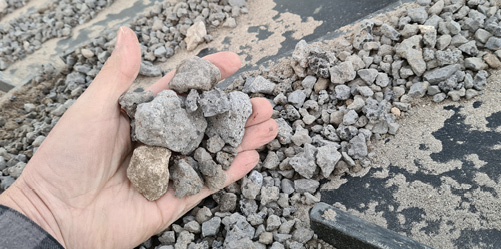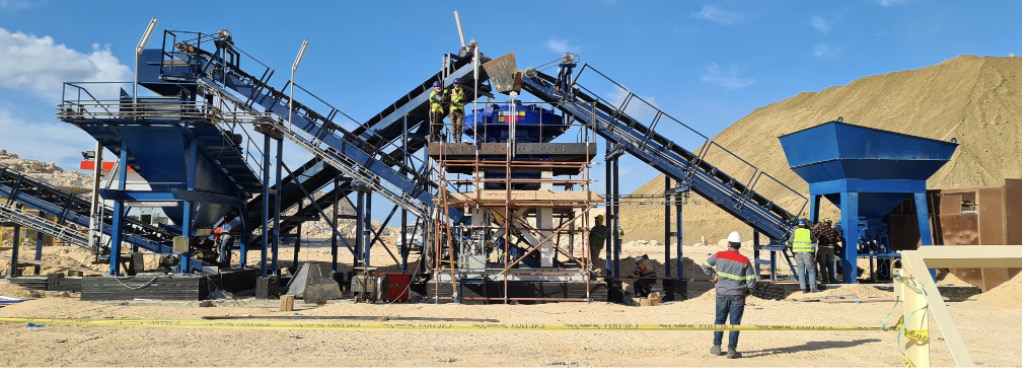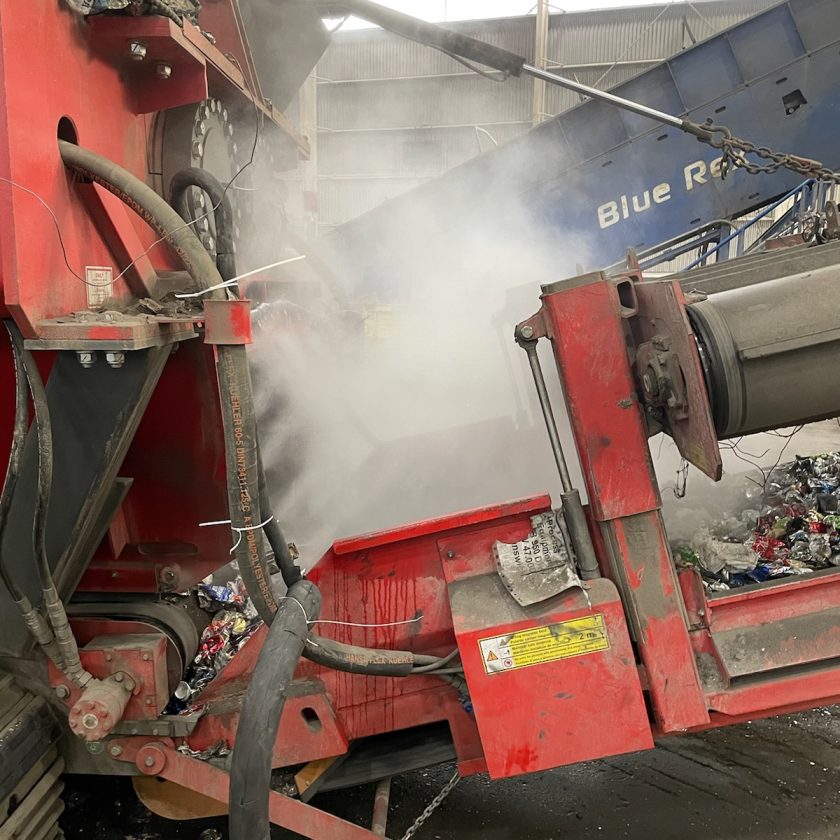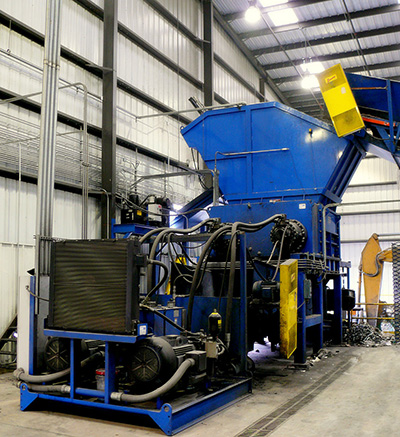
Amreyah Cement is using crushing technology from BHS-Sonthofen in its plant in Egypt. The BHS rotor centrifugal crusher type RSMX 1222 is being used to recover high-quality additives from previously unused slag for the first time to make its cement production more sustainable.
The customer benefited from experience gained from a BHS project in Abu-Dhabi during the implementation process.
Sand is a sought-after raw material, the global deposits of which are declining while demand from the building materials industry is constantly rising. So-called “slag” sand can replace some of the natural sands needed to produce cement.
The advantage: composite concrete produced this way has a lower risk of concrete corrosion due to the high mineral content of the slag. This also increases the material’s resistance to acids and weathering. In addition, producing composite concrete not only generates less CO2 – using waste materials from the steel industry that would otherwise be disposed of also contributes to the sustainable use of resources.
Building materials producer Amreyah Cement Co. is part of the Brazilian InterCement Group and is now manufacturing these additives, also known as “black sands,” at its plant in Alexandria (Borg El-Arab) in Egypt for the first time. The crushers previously used at the production site were not capable of producing slag sand of the required quality. For this reason, the operators commissioned the crushing experts from BHS-Sonthofen to plan and implement a suitable system.
The customer opted for the BHS rotor centrifugal crusher type RSMX 1222. The high-performance crusher with vertical shaft is particularly suitable for crushing and refining both mineral materials and highly abrasive materials with a very high hardness such as slag.
The input material, which has a maximum particle size of 50 mm, is accelerated to a very high speed in the twin-chamber rotor and then hurled against a fixed anvil ring. This reduces the output material to the required particle size. The size of the rotor and the housing completely eliminate the risk of clogging.
One particular advantage the BHS machine has is that a material bed of slag forms along the centrifugal chambers in the twin-chamber rotor that provides autogenous wear protection. This drastically reduces wear on the rotor, which is essential with the highly abrasive input material.
As the input material leaves the rotor, it passes through centrifugal profiles made of particularly hard tungsten carbide, which withstand the highly abrasive properties of the slag and further reduce wear on the machine. The crushing result can be adjusted by selecting the appropriate speed to achieve Amreyah Cement’s target throughput rate of 150 tph. The result is a high-quality slag sand with a particle size of 0 to 4 mm.
A similar project has already been realized with the BHS rotor centrifugal crusher type RSMX 1222 in Abu Dhabi. In the past, BHS successfully carried out crushing tests at the Test Center in Sonthofen, Germany, with EAF slag that was supplied.
The expertise gained in the process paid off. At the plant in Egypt, BHS-Sonthofen was able to not only refer to the test values from Abu-Dhabi, but also draw on the experience gained in setting up the slag processing machine.
“The RSMX has proven itself as a standard crusher for processing abrasive materials,” said Hans Traut, project manager at BHS-Sonthofen.
Amreyah Cement Co. is very satisfied with its decision to use crushing technology from BHS-Sonthofen. The company plans to work with BHS on other projects in the future.
BHS-Sonthofen – BHS rotor centrifugal crusher: www.bhs-sonthofen.de




